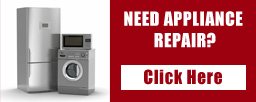In many cases, utilities and governments are motivated to offer incentives to encourage homeowners to switch to new, more energy-efficient HVAC systems. Such units reduce the strain on the generating capacity of utilities, and they help meet mandates to reduce carbon emissions.
Federal Tax Credit
Qualifying central air conditioning (CAC) units purchased before December 31, 2016, qualify for a $300 federal tax credit. To get this tax credit, a homeowner must meet several requirements:
- The tax credit is only applicable when a new central air system is installed in an existing residence.
- The home must be one’s principal residence.
- The new CAC unit must have an energy efficiency ratio (EER) of greater than or equal to 13, or a seasonal energy efficiency ratio (SEER) greater than or equal to 16.
When a qualifying system is purchased and installed, a homeowner can obtain a Manufacturer’s Certification Statement, which is a signed statement certifying that the product qualifies for the tax credit. It is important to keep a copy of the certification statement for tax purposes, although it is not necessary to submit it with a tax return.
Other Rebates and Tax Credits
At any one time, there are many other local, state and utility incentives available as well. Availability is dependent on where you live. The U.S. Department of Energy makes it easy to search available rebates and HVAC tax credits by state at energy.gov. Your search can then be refined by keyword, like “air conditioning” or “furnace.”
At ABA Heating and Cooling, we would welcome the opportunity to discuss your heating and cooling options to find the most cost-effective solution. We’ll gladly answer your questions about tax credits and rebates that might offset a key part of a new, energy-efficient system. To arrange for a free estimate, please contact us.




